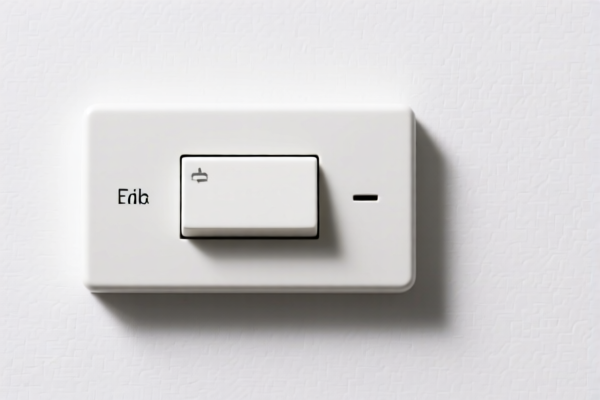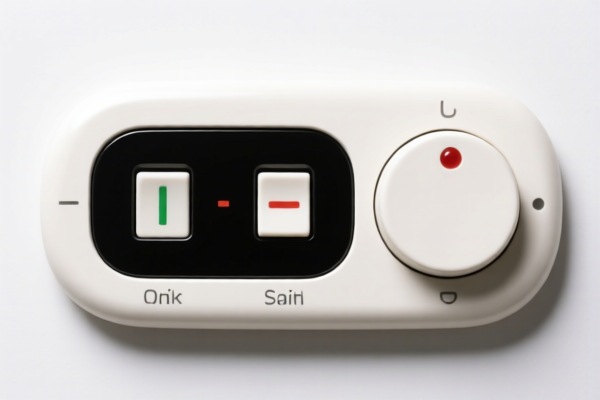| HS Code | Official Doc | Tariff Rate | Origin | Destination | Effective Date |
|---|---|---|---|---|---|
| 8536100020 | Doc | 57.7% | CN | US | 2025-05-12 |
| 8536509050 | Doc | 55.0% | CN | US | 2025-05-12 |
| 8536509033 | Doc | 55.0% | CN | US | 2025-05-12 |
| 8536509033 | Doc | 55.0% | CN | US | 2025-05-12 |
| 8536509040 | Doc | 55.0% | CN | US | 2025-05-12 |




Toggle Switch
A toggle switch is an electrical switch that is manually operated to control the flow of electricity in a circuit. It features a lever or handle that is flipped between two or more positions to open or close the electrical connection.
Material
Toggle switches are constructed from a variety of materials, including:
- Housing: Typically made of durable plastics (like nylon or polycarbonate) or metal (like stainless steel or aluminum) to provide physical protection and insulation.
- Contacts: Often use alloys of silver, brass, or other conductive materials to ensure reliable electrical connection and minimize resistance. Contact materials are selected for their conductivity, corrosion resistance, and ability to withstand repeated use.
- Lever/Handle: Can be plastic, metal, or a combination of both, depending on the application and desired aesthetics.
- Internal Mechanism: Utilizes spring-loaded components and conductive pathways, often incorporating materials like beryllium copper for reliable contact performance.
Purpose
The primary purpose of a toggle switch is to provide a simple and robust method for controlling electrical devices. They are used for on/off control, selection between different circuits, and in more complex applications, for switching between multiple states.
Function
Toggle switches function by mechanically altering the connection between electrical terminals.
- Single-Pole Single-Throw (SPST): Simplest type; connects or disconnects a single circuit. Has two terminals.
- Single-Pole Double-Throw (SPDT): Connects one circuit to either one of two others. Has three terminals.
- Double-Pole Single-Throw (DPST): Simultaneously connects or disconnects two circuits.
- Double-Pole Double-Throw (DPDT): Simultaneously connects or disconnects two circuits to two other circuits.
- Multi-Pole Multi-Throw (MPMT): More complex configurations for controlling multiple circuits with multiple switching options.
The internal mechanism utilizes a spring-loaded actuator that moves a set of contacts to either bridge the circuit (closed position - ON) or separate them (open position - OFF).
Usage Scenarios
Toggle switches are found in a wide variety of applications:
- Lighting Control: Lamps, ceiling fans, and other lighting fixtures.
- Power Tools: Used for on/off control of power tools and machinery.
- Automotive: Control various electrical systems in vehicles (e.g., headlights, interior lights, auxiliary accessories).
- Industrial Equipment: Used in control panels and machinery for switching power and controlling functions.
- Electronics: Found in a variety of electronic devices for power control and mode selection.
- Marine Applications: Used on boats and other marine vessels due to their robustness and resistance to environmental factors.
Common Types
- Momentary Toggle Switches: Only operate when the lever is held in a specific position; returns to a neutral position when released. Used for push-button applications.
- Latching Toggle Switches: Remain in the last set position until manually changed.
- Illuminated Toggle Switches: Feature an integrated LED indicator to show the switch's status.
- Miniature Toggle Switches: Small form factor for use in compact electronic devices.
- Heavy-Duty Toggle Switches: Designed for high current and voltage applications.
- Paddle Toggle Switches: Utilize a flat paddle instead of a traditional lever.
Based on the provided information, a toggle switch falls under the category of electrical apparatus for switching or protecting electrical circuits. Here's a breakdown of relevant HS codes:
- 8536100020: Electrical apparatus for switching or protecting electrical circuits, or for making connections to or in electrical circuits (for example, switches, relays, fuses, surge suppressors, plugs, sockets, lamp-holders and other connectors, junction boxes), for a voltage not exceeding 1,000 V; connectors for optical fibers, optical fiber bundles or cables: Fuses Glass cartridge. This code covers switches operating at or below 1,000V.
- 8536509065: Electrical apparatus for switching or protecting electrical circuits, or for making connections to or in electrical circuits (for example, switches, relays, fuses, surge suppressors, plugs, sockets, lamp-holders and other connectors, junction boxes), for a voltage not exceeding 1,000 V; connectors for optical fibers, optical fiber bundles or cables: Other switches: Other: Other Other. This is a broader category for switches under 1,000V that don't fall into more specific classifications.
- 8537109120: Boards, panels, consoles, desks, cabinets and other bases, equipped with two or more apparatus of heading 8535 or 8536, for electric control or the distribution of electricity, including those incorporating instruments or apparatus of chapter 90, and numerical control apparatus, other than switching apparatus of heading 8517: For a voltage not exceeding 1,000 V: Other Switchgear assemblies and switchboards. If the toggle switch is part of a larger switchboard assembly operating at or below 1,000V, this code may apply.
Tax Rate Information:
- 8536100020: Base tariff: 2.7%, Additional tariff: 25.0%, Post-April 2, 2025, additional tariff: 30.0%. Total tariff: 57.7%.
- 8536509065: Base tariff: 0.0%, Additional tariff: 25.0%, Post-April 2, 2025, additional tariff: 30.0%. Total tariff: 55.0%.
- 8537109120: Base tariff: 2.7%, Additional tariff: 25.0%, Post-April 2, 2025, additional tariff: 30.0%. Total tariff: 57.7%.
Important Note:
The applicable HS code depends on whether the toggle switch is being imported as a standalone component or as part of a larger assembly. If the switch is part of a switchboard, the code 8537109120 may be more appropriate.
Customer Reviews
No reviews yet.